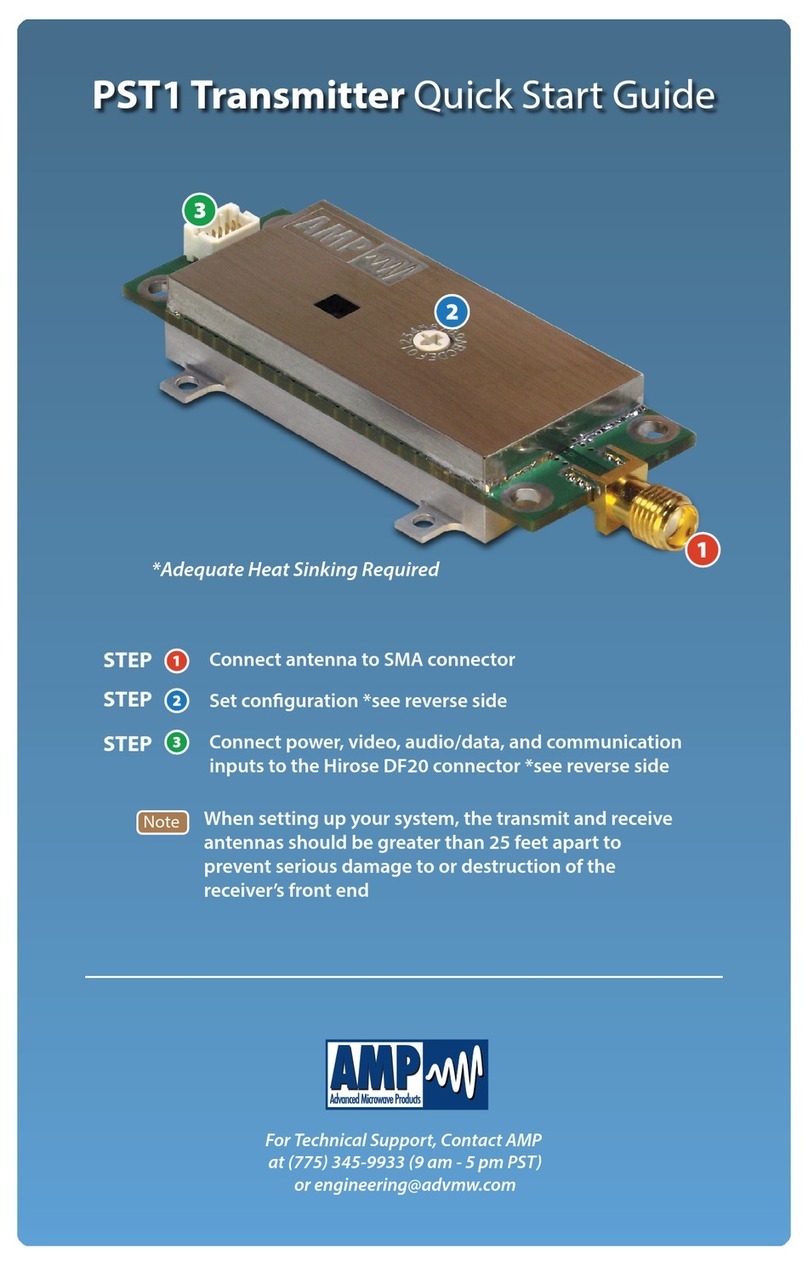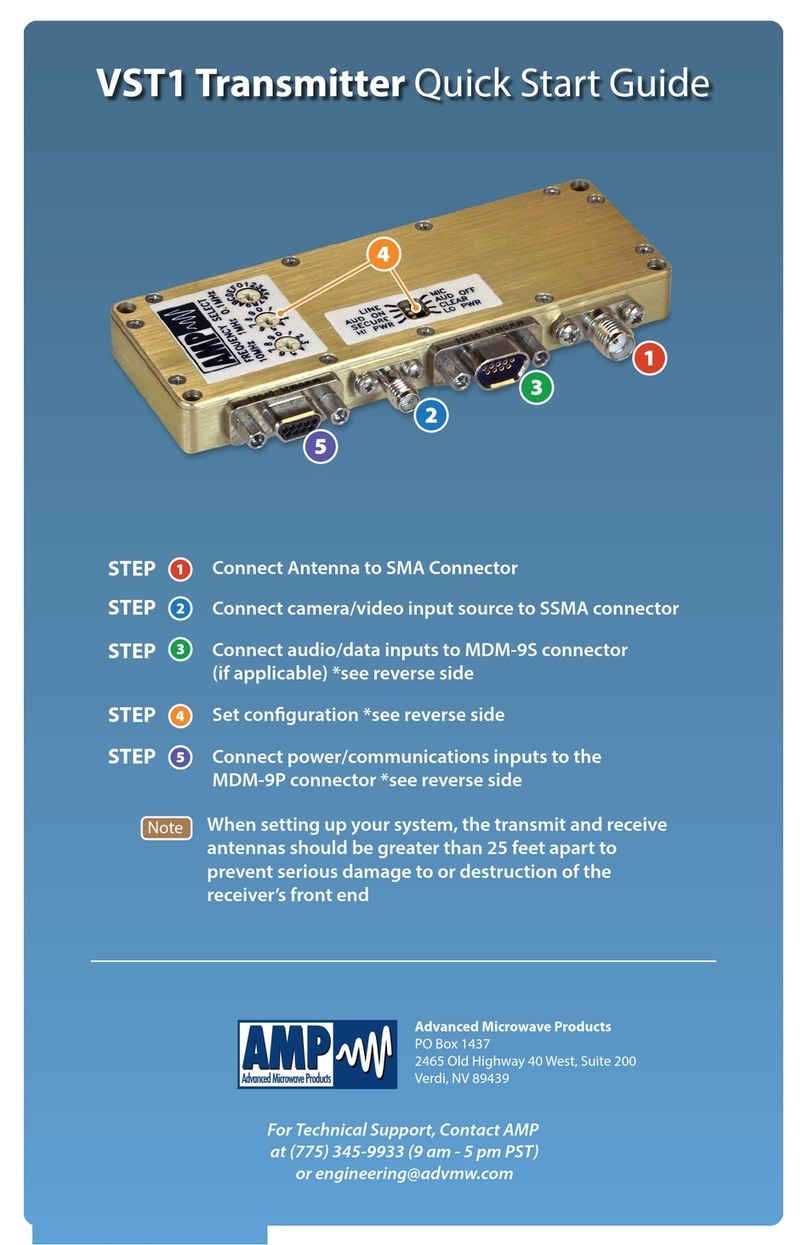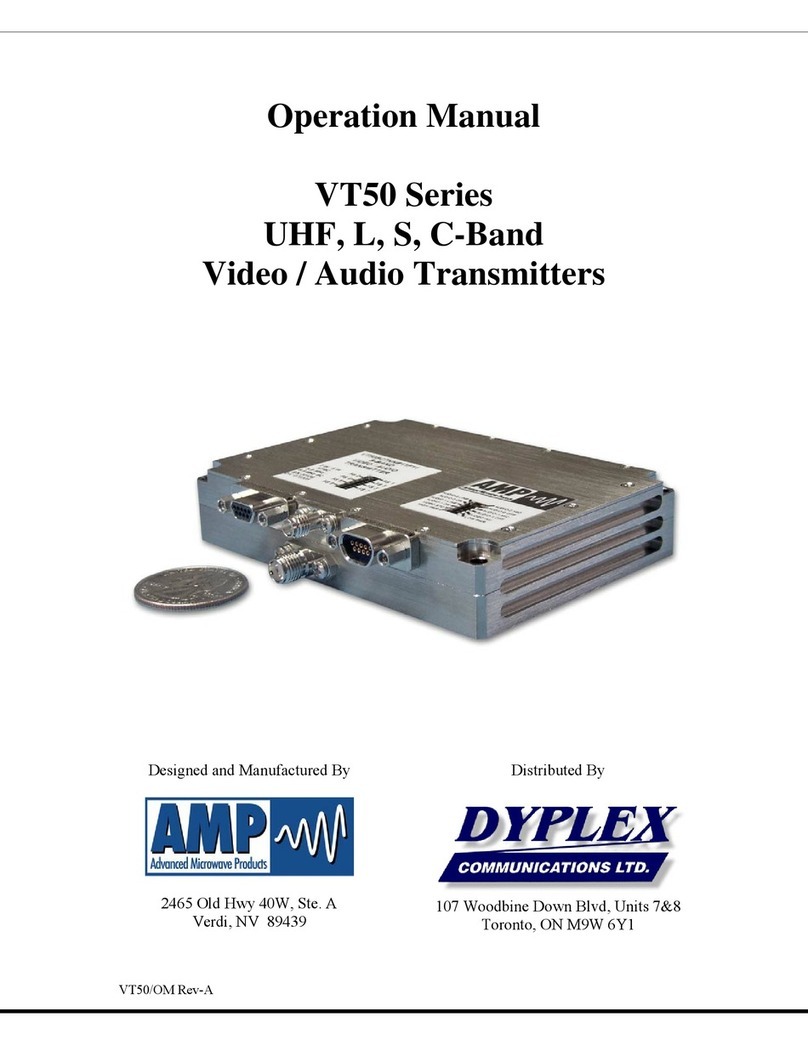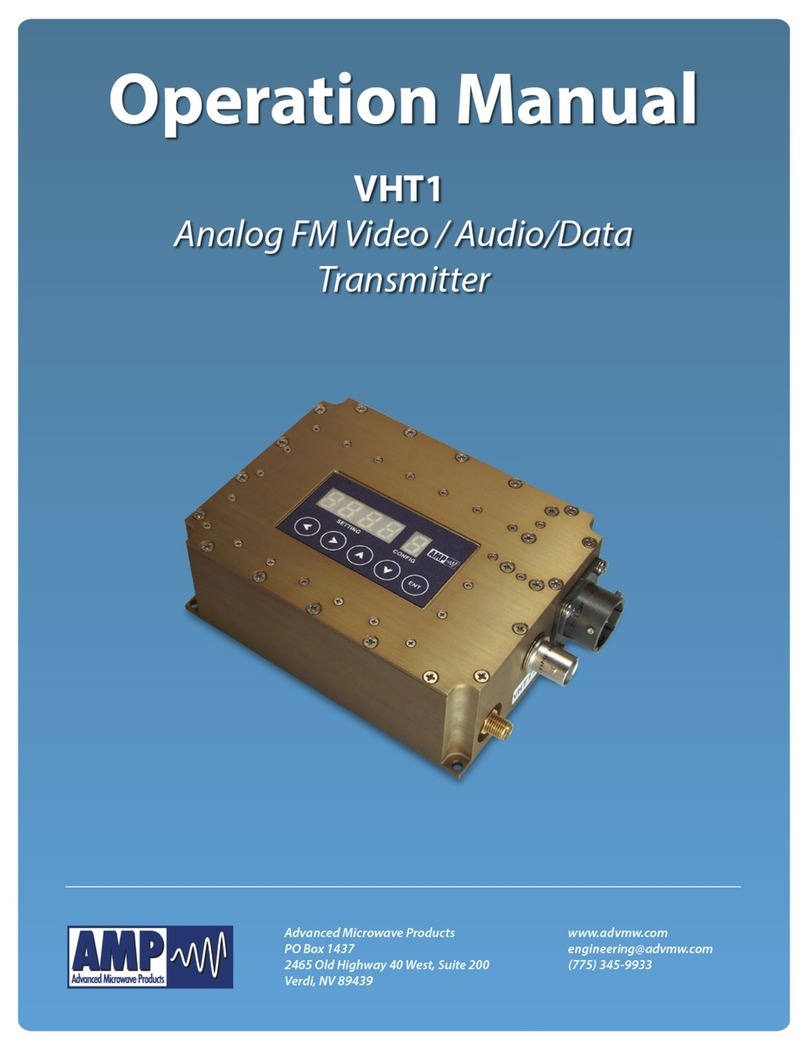
VT15/OM Rev-A
8
POWER CONNECTOR (MDM-9P)
Mate: Supplied MDM-9S Power Cable
Red Wire – Positive DC Input (+9 to +16 Vdc)
Black Wire – Negative DC Input (Ground)
White Wire – On/Off Control
(Ground or <0.8 Vdc for On, Open for Off)
AUDIO CONNECTOR (MDM-9S)
Installed only when subcarrier specified
Mate: Supplied MDM-9P Audio Cable
Red Wire – Mic Supply Output
Yellow Wire – Audio 1 Input (Mic or Line)
Violet Wire – Audio 2 Input (Line)
Black Wire(s) – Ground (1 per subcarrier)
VIDEO CONNECTOR (SSMA)
SMB Connector Optional
Mate: Supplied Video Adapter Cable
Standard 75 Ohm Video Input
Accepts Standard 1 Vpk-pk Video Signal
RF OUTPUT CONNECTOR (SMA)
Mate: Appropriately Selected SMA Antenna
Standard 50 Ohm RF Output
Outputs Nominal RF Power Level to Antenna
4.2 Use and Function of Switches
4.2.1 Frequency Selection Switches:
Frequency selectability is an option on all VT15 Series Transmitters providing RF
frequency control with slide switches accessible through the chassis lid. S-Band units
utilize 8 slide switches; UHF, L-Band, and C-Band units utilize 12 slide switches. Each
switch is uniquely identified (FS1 through FS8, or FS1 through FS12) on the unit label.
To program the desired RF frequency, position the individual switches as shown in the
applicable Frequency Selection Chart, included with product shipment and available as a
download on the applicable Video Product Page of our website
(www.advmw.com/video).
4.2.2 Dual Power Switch:
VT15 Series Transmitters may be ordered with nominal RF output power of 250 mW,
500 mW, 1 Watt, or 2 Watts and may be optionally configured for dual power operation
utilizing any two power levels. RF output power level is controlled with a slide switch
accessible through the chassis lid. Switch is inactive if this option is not purchased.
To select the higher RF output power level, position the slide switch to HIGH PWR as
indicated on the unit label. To select the lower RF output power level, position the slide
switch to LOW PWR as indicated on the unit label.
L and S-band VT15 Series Transmitters operating at 2 Watts incorporate an automatic
power “fold back” circuit to protect the unit in case of high VSWR loads (such as RF
short, RF open, broken antenna, wrong antenna, etc.). In the event of a high VSWR load
causing greater than 1 Watt power reflection, the RF output power is automatically
reduced to below 1 Watt to avoid excessive heat and potential damage to the unit. The
“fold back” circuit attempts to restore the RF output power to its normal level every 1
millisecond, checking each time whether the high VSWR load has been repaired.




































